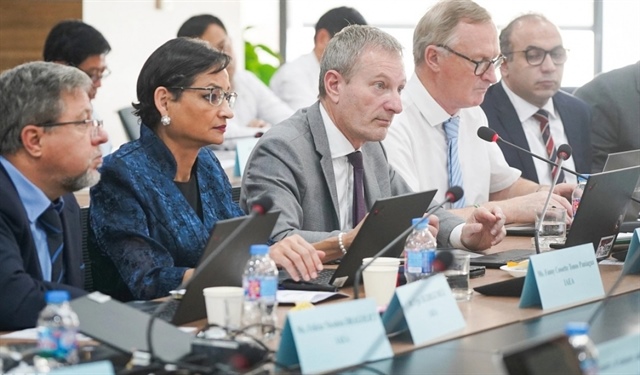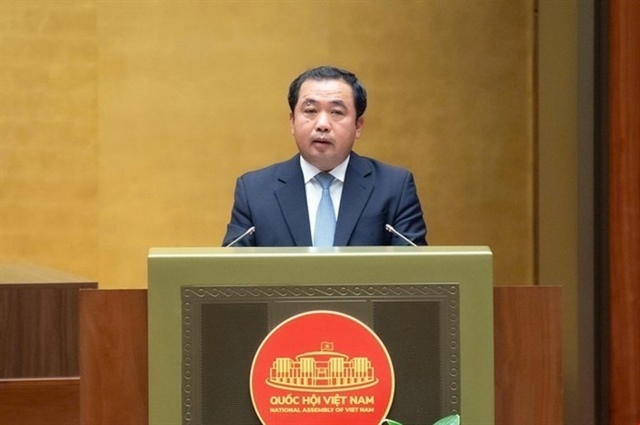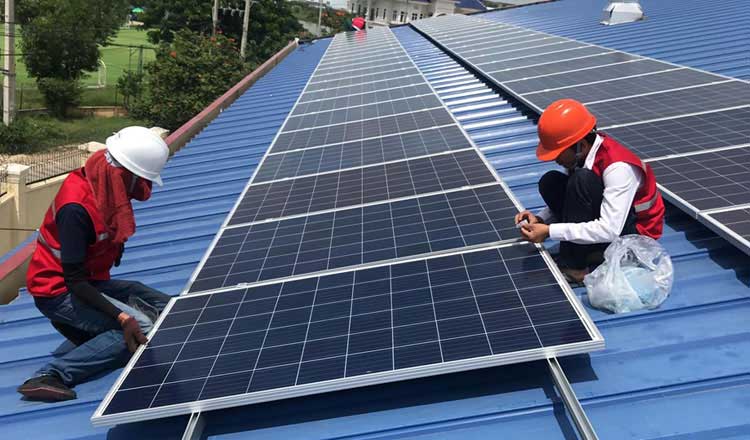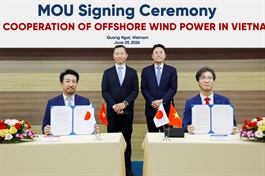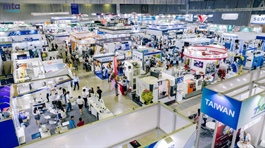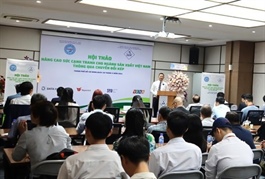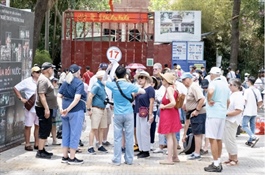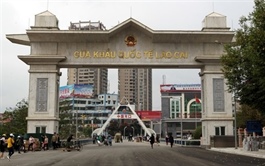Amendment needed to key law to encourage sustainable and efficient agriculture: insiders
Amendment needed to key law to encourage sustainable and efficient agriculture: insiders
Over the past decade, a key tax law has revealed many shortcomings, causing significant impacts on Việt Nam’s agricultural sector – a key pillar of the economy. Experts and businesses have called for timely and effective changes to address these issues, support farmers and businesses and move towards sustainable agriculture.
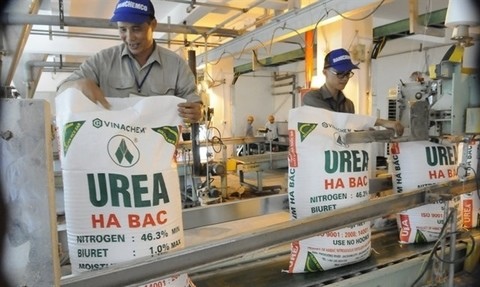
A farmer uses Phú Mỹ fertiliser on the rice field. Experts and businesses have proposed reinstating a 5 per cent VAT rate for fertilisers and specialised agricultural machinery to encourage investment and reduce costs. — Photo courtesy of Petrovietnam |
The Law No. 71/2014/QH13, issued on November 26, 2014, amending and supplementing certain provisions of the Tax Law, provides a VAT exemption for fertilisers.
Nguyễn Văn Phụng, former Director of the Large Enterprise Tax Management Department at the General Department of Taxation, noted that in 2008, the National Assembly passed the VAT Law with three rates: zero per cent, 5 per cent and 10 per cent. Fertilisers and specialised agricultural machinery were taxed at 5 per cent. However, during the economic crisis in the Asia-Pacific region in 2008 and the subsequent difficulties Việt Nam faced, policymakers had to find ways to support the agricultural sector.
Many scientists and industry associations recommended lowering the VAT on agricultural inputs, including fertilisers, to reduce costs for farmers and benefit producers.
During discussions, the National Assembly considered reducing the VAT rate on agricultural inputs from 5 per cent to a non-taxable status due to the lack of data proving whether a 5 per cent or non-taxable rate was more beneficial. In 2014, the Assembly amended Law No. 71 to exempt fertilisers and specialised agricultural machinery from VAT.
After implementation, the law exhibited several issues. Domestic fertiliser prices didn't decrease but increased, limiting production and business activities, hampering investment projects in fertiliser production and causing difficulties for businesses and farmers.
Phụng Hà, Vice Chairman and General Secretary of the Vietnam Fertiliser Association, highlighted the difficulties faced by fertiliser manufacturers due to the inability to deduct VAT on input goods and services. This increased production costs and reduced profits, disadvantaging domestic producers against imported fertilisers. Additionally, the inability to deduct input VAT discouraged investment in new, high-quality fertiliser products.
Fertilisers account for 40-60 per cent of agricultural production costs and if these costs could be deducted, the overall product cost would decrease, he said.
On the other hand, Law No. 71 exempts imported fertilisers from VAT, benefiting foreign manufacturers exporting to Việt Nam.
Annually, Việt Nam's agriculture consumes 11-12 million tonnes of fertilisers, with about eight million tonnes produced domestically. The rest are imported, creating unfair competition due to VAT exemptions abroad.

Fertiliser packing at Hà Bắc Nitrogenous Fertiliser and Chemicals JSC's factory in Bắc Giang Province. — Photo courtesy of Petrovietnam |
According to economist Ngô Trí Long, the lack of VAT deductions makes domestic fertilisers less competitive. Foreign enterprises benefit from reduced import duties in Việt Nam under free trade agreements, allowing them to lower fertiliser prices and compete with domestic producers, even those using outdated technologies. This not only hampers domestic fertiliser production but also negatively impacts agricultural products and the environment.
Long-term dependence on imported fertilisers cannot sustain agricultural development and harms the relationship between industry, agriculture, farmers and rural areas, affecting national food security, Long said.
He claimed that without tax policy changes, domestic companies might shift their business strategies, conceding market share to cheaper, lower-quality imported fertilisers, posing a significant threat to Việt Nam's agriculture and agricultural exports.
Taxed again?
Nguyễn Trí Ngọc, Vice Chairman of the Vietnam Fertiliser Association, noted that 60 per cent of imported fertilisers come from Russia and China, with VAT rates of 20 per cent and 11 per cent, respectively. Countries like Malaysia, Indonesia and Thailand also tax fertilisers at around 8 per cent.
With agricultural export value of US$55 billion annually, Ngọc said Việt Nam needs refined support policies, particularly tax policies, to sustain this sector.
Both experts and businesses have proposed reinstating a 5 per cent VAT rate for fertilisers and specialised agricultural machinery to encourage investment and reduce costs.
Nguyễn Hoàng Trung, Deputy General Director of DAP - Vinachem, affirmed that amending Law No. 71 to tax fertilisers would benefit domestic producers by lowering input costs, reducing product prices and increasing market competitiveness. This would also provide resources and incentives for investment in technology and production scale, leading to high-quality fertiliser products for farmers.
At the National Assembly’s session on the draft Value Added Tax (VAT) Law amendments on June 24, Minister of Finance Hồ Đức Phớc emphasised that VAT has a broad regulatory scope covering nearly all goods and services. Therefore, this law is complex and impacts the interests of many producers and businesses. Consequently, amending provisions in the draft must ensure production and trade development in accordance with established tax strategies.
The drafting committee rigorously studies and assesses the impact of each VAT policy to encompass revenue sources, expand tax bases and align with international practices, Phớc said.
Regarding fertilisers, he noted differing views suggesting tax exemption versus a 5-per-cent tax rate. Previously, fertilisers were taxed, then exempted and are now being considered for taxation again. The drafting committee will need to reassess the impacts and present them to the National Assembly at the year-end session.




